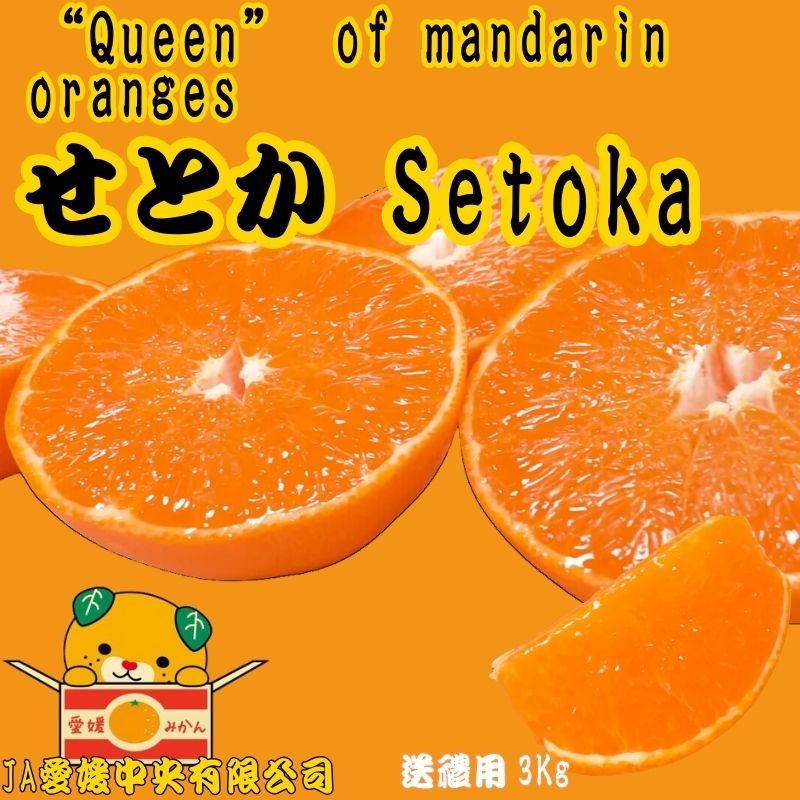WASABI
Setouchi from Ehime Prefecture, Japan, gift box, approx. 3kg
Setouchi from Ehime Prefecture, Japan, gift box, approx. 3kg
Share
Couldn't load pickup availability
*This item can only be shipped to Singapore and Malaysia.
The name "Setoka" was chosen because it is a reference to the place name "Hayasaki Seto" which can be seen from Kuchinotsu Town, Nagasaki Prefecture, where it is cultivated, and because it is expected to be cultivated in the Setouchi region and has a very nice fragrance. As its name suggests, it is cultivated in large quantities in the Setouchi region, and Ehime Prefecture secures nearly 70% of the national harvest (2021 harvest).
Not only is it delicious, but the skin is smooth and fine-grained, and when cut, the cross section is beautiful to look at, with a very thin outer skin packed with deep orange flesh. Setoka is also known as the "fatty tuna of citrus" due to its rich flavor and sweetness. Inside the thin skin is a sweet fragrance inherited from Encore, plenty of sweet juice, and soft, melting flesh. The Kiyomi has a bouncy texture, while the Encore has a sweet, melting texture.
It can be said to be a super variety that inherits the best of both worlds by crossing them, with the sweetness of the berry and the ease of eating of the Marcott. It is an exquisite product that is the pinnacle of perfection in all aspects, including cuteness, texture, and juiciness. The fruit is large, weighing about 200 to 280g. The skin is orange to deep orange, of medium thickness, and of medium to soft skin. The fruit surface is smooth, but the oil cells are prominent, and it has a medium Marcott aroma. The flesh is orange, with almost no sacs, and is soft and juicy. It ripens in February and has a rich flavor. The sugar content of the juice is 12 to 14 degrees. Because it is a watery fruit, those that are unblemished and of uniform size will inevitably be more expensive.
Visit from early February to early April, but the best time to eat them is in March.
Because they have less skin, they are more delicate than Iyokan and Hassaku oranges, so please handle them with care.
Do not store it in a heated room as storing it in a high place will cause the skin to dry out and wilt.
On the other hand, if it gets too cold it can cause chilling damage, so there is no need to put it in the refrigerator.
It is best to store it at room temperature, away from cold sunlight.














